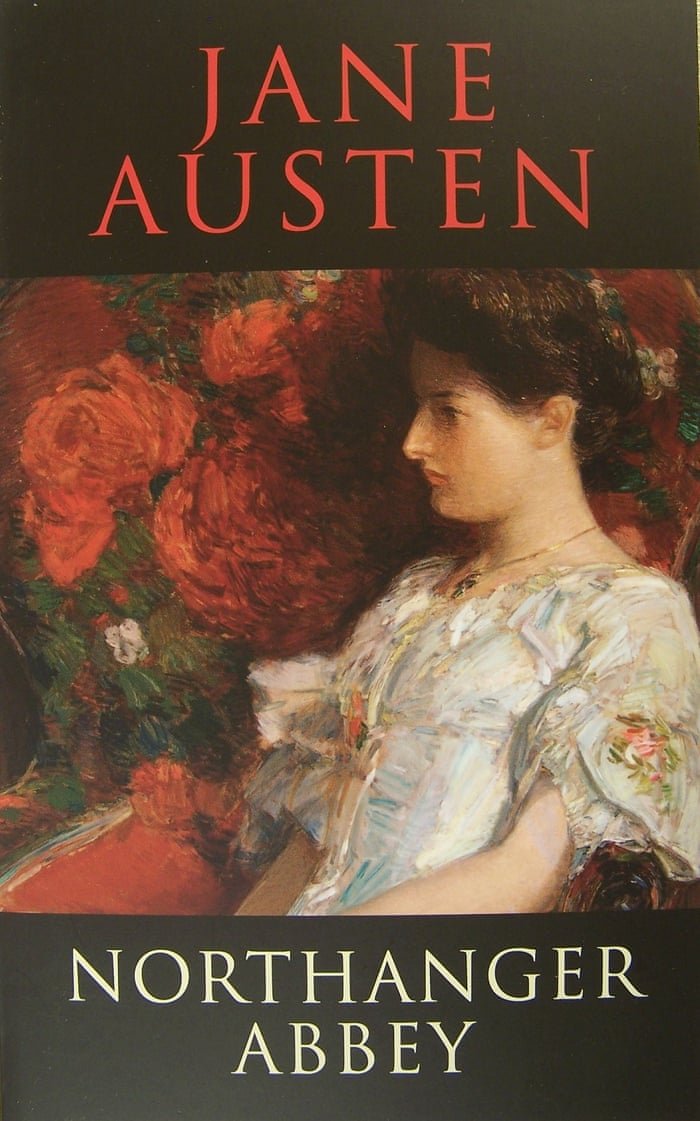Northanger Abbey

Rating: 4.2/5
Author: Jane Austen
Paperback: 264 pages
Publisher: Rupa
Publishing Date: 1 February 2002
Language: English
Genre: Classic Fiction
ISBN-10: 9788171676446
ISBN-13: 978-8171676446
ASIN: 8171676448
Cost: Rs. 93 (Paperback) , Rs. 138 (Hardcover)
Plot:
The first of Jane Austen's novels to be completed, Northanger Abbey was not published until after the author's death in 1818. A parody of Gothic fiction, the novel revolves around Catherine Morland and her friendship with the Tilney siblings which leads her to Northanger Abbey, a place that comes to represent, for her, mystery, disillusionment and love.
Review:
Most literary critics refer to Northanger Abbey as Jane Austen's "Gothic parody" because it satirizes the form and conventions of the Gothic novels that were popular during the time when Austen wrote Northanger Abbey. In particular, Austen is said to have targeted Anne Radcliffe, the author of gothic novels such as A Sicilian Romance (1790), The Romance of the Forest (1791), and The Mysteries of Udolpho (1794). Gothic novels and their conventions occur throughout the novel. On the ride from Bath to Northanger Abbey, Henry invents a humorous hypothetical story about Catherine's first night in Bath, making subtle references to several different Gothic novels.
Austen captures some of the psychological tension typical of Gothic novels by chronicling Catherine's delusions. So although she parodies the gothic genre, Austen also makes use of some of its techniques. Some of the novel has nothing to do with Gothic novels and conventions. The first half of Northanger Abbey takes place entirely at the resort town of Bath, and has nothing to do with Gothic novels. This first half resembles Emma or Mansfield Park more than it does The Mysteries of Udolpho.
Northanger Abbey is concerned with young people and their feelings. Northanger Abbey portrays Catherine in situations common to teenagers: she faces peer pressure when James, Isabella and John urge her to join them on their carriage trips.
Northanger Abbey was the first of Jane Austen's novels to be completed for publication, in 1803. However, it was not published until after her death in 1817, along with another novel of hers, Persuasion. In the course of the novel, she discovers that she differs from those other women who crave wealth or social acceptance, as instead she wishes only to have happiness supported by genuine morality.
Adaptations:
- The A&E Network and the BBC released the television adaptation Northanger Abbey in 1986.
- An adaptation of Northanger Abbey with screenplay by Andrew Davies, was shown on ITV on 25 March 2007 as part of their "Jane Austen Season". This adaptation aired on PBS in the United States as part of the "Complete Jane Austen" on Masterpiece Classic in January 2008. It stars Felicity Jones as Catherine Morland and JJ Feild as Henry Tilney.
- A stage adaptation of Northanger Abbey by Tim Luscombe (published by Nick Hern Books ISBN 9781854598370), was produced by Salisbury Playhouse in 2009. It was revived in Chicago in 2013 at the Remy Bumppo Theatre.
- A theatrical adaptation by Michael Napier Brown was performed at the Royal Theatre in Northampton in 1998.
- The 1993 independent film Ruby in Paradise starring Ashley Judd was loosely inspired by Northanger Abbey.
- "Pup Fiction" – an episode of Wishbone featuring the plot and characters of Austen's Northanger Abbey.
About the author:
Jane Austen was an English novelist whose works of romantic fiction, set among the landed gentry, earned her a place as one of the most widely read writers in English literature, her realism and biting social commentary cementing her historical importance among scholars and critics. Though she published her works anonymously, Austen was so successful that she enjoyed personal and professional independence uncommon to women in Georgian middle-class society.
She published four novels during her lifetime: Sense and Sensibility (1811), Pride and Prejudice (1813), Mansfield Park (1814), and Emma (1815). In these and in Persuasion and Northanger Abbey (published together posthumously, 1817), she vividly depicted English middle-class life during the early 19th century. Her novels defined the era’s novel of manners, but they also became timeless classics that remained critical and popular successes two centuries after her death.














































